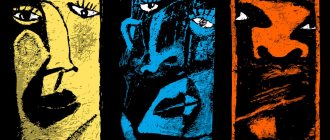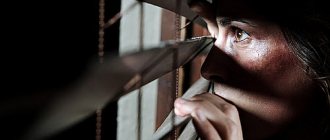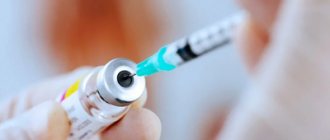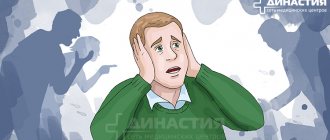Bipolar affective disorder (BID) is a mental disorder characterized by alternating manic and depressive phases. But for many people, this disease occurs in such a way that they do not perceive their mood swings as a mental illness. Therefore, they do not come to doctors for help for an extremely long time, losing precious time of their own lives. But, even after contacting a psychiatrist, patients can often be given a different diagnosis (depressive episode, recurrent depressive disorder according to the International Classification of Diseases - ICD10) due to the fact that it is not always possible to determine the hypomanic phase, which in type II bipolar disorder can last from several hours to several days. This happens because during these short-term periods of hypomania, a person feels cheerful and good when his mood and activity are slightly increased compared to his usual state. And he simply does not understand that this is actually a painful condition.
Therefore, patients with bipolar disorder most often turn to a doctor in the depressive phase, since depression impairs a person’s ability to work. States of depression, hopelessness, and despondency bring them severe discomfort, and their quality of life is significantly reduced.
Bipolar affective disorder. What is this?
Bipolar affective disorder is manifested by alternating two types of emotional states: manic (or hypomanic) and depressive (or subdepressive), which occur regardless of external circumstances. It happens that the transition from the depressive phase to the manic phase occurs at lightning speed. In the evening, a person goes to bed despondent, and in the morning he can wake up with a fountain of emotions and plans. Mixed states are also possible, when various combinations of manic and depressive symptoms are simultaneously observed. With bipolar disorder, intermissions are also observed, intervals of good condition between manifestations of the disease (phases). At such favorable moments, the mental functions of patients are completely restored, people begin to live a full, normal life, and their behavior does not differ from the behavior of the majority. The occurrence of bipolar affective disorder (BD) is caused by internal (endogenous) factors that are hereditary.
Signs of bipolar disorder
Signs of bipolar affective disorder depend on the phase in which the patient is in bipolar disorder, since this disease is characterized by alternating manic and depressive states (phases). The first is that it very rarely brings a patient with bipolar affective disorder to the doctor’s office, since a person suffering from bipolar disorder may perceive the manic phase as a so-called state. high, enlightenment, resourceful state The emotional uplift is so strong that a person feels almost omnipotent, a superhero. Sleep during the manic phase of bipolar disorder is significantly reduced, but at the same time the patient with bipolar disorder feels well and often performs an incredible and unproductive number of tasks at the same time (usually without completing them properly due to increased distractibility. But when he falls into a deep hole of lack of joy and desire to do any activity, then the person loses any desire, he doesn’t want anything: neither to communicate, nor to work, nor to leave the house. Sleep is often disturbed, and even if a patient with bipolar disorder has medicated sleep, he feels unrested and exhausted in the morning. A person who is in a depressive phase may even skip meals and not maintain basic hygiene.
In a depressed state, relatives or friends seek help from a doctor who, without receiving information about the previous manic or hypomanic phase, may mistake bipolar disorder for a depressive disorder. Therefore, an experienced psychiatrist will definitely ask the patient about emotional swings and episodes of mood swings that may have been observed in the past.
How to help someone who is sick
The main help for affective diseases is to organize an examination by a psychiatrist and begin treatment.
Unfortunately, statistics show that patients with affective pathology rarely consult a doctor in a timely manner. At best, they will go to a psychologist (who will not always be able to discern the disease) or will resort to sedatives, stimulants, alcohol, etc.
The first trip to the doctor with complaints about a mental state is always a difficult step, so relatives here must take the initiative.
Manic phase of bipolar affective disorder
In the clinical picture of the manic phase of bipolar disorder, there is the following basic triad of symptoms:
- hyperthymia - elevated mood, regardless of external circumstances;
- acceleration of the pace of thinking and speech;
- increased motor activity.
But, unfortunately, the manic phase is often not taken seriously enough by a person suffering from bipolar disorder, and most often he does not consider his altered state to be painful at all. Such patients lack criticism; they perceive an excessive increase in mood, strength, energy, optimism, self-esteem and their capabilities with great pleasure, not realizing that these are actually manifestations of the disease, and the increase in activity will be followed by a decline. Some feel a surge of energy and universal love, some are drawn to dance and sing in public places, suddenly leave for other countries without money, while others begin grandiose, impossible projects. And all this leads a person who is in a manic phase to destructive actions. All of these conditions can actually be dangerous, since during this phase a person is able to borrow a lot of money and spend it completely irrationally, he can enter into a relationship that will destroy his family, lose a well-paid and beloved job, etc. Often people in such able to agree to a huge amount of work, sign contracts that are impossible to implement. When a person, after suffering a manic state, enters the remission phase, he is horrified by the actions he has committed.
G.P. Panteleeva
Moscow, Russia
The formation of ideas about the clinical essence of endogenous affective and schizoaffective psychoses and the legitimacy of their identification into nosologically independent diseases are historically associated, on the one hand, with the imperfection of the concept of a strictly dichotomous division of endogenous mental diseases, and on the other hand, with the obvious heterogeneity of disorders classified as MDP, found in the process of their clinical and pathogenetic study. Discussion in this area is conducted both in the field of nosography of these diseases, their taxonomy, and their terminological designation. As a result, both the content and scope of the concept of affective and schizoaffective psychoses vary.
Critical reflection on the nosological concept of E. Kraepelin resulted in a gradual revision of the concept of a single circular psychosis. The vagueness of the boundaries of TIR and the heterogeneity of the diseases included here, such as schizoform psychoses, relapsing catatonia, and periodic paranoia, became obvious. Th. Ziehen (1908) (28) first proposed talking about affective psychoses, where mood disorders were leading, and J. Kasanin (1933) (20) introduced the concept of schizoaffective psychosis, which combined in its clinical essence the signs of two main nosological units - schizophrenia and MDP . Since then, the study of their clinic and pathogenesis among the problems of modern psychiatry has taken a leading place, which was greatly facilitated by the wide prevalence of affective pathology in the population (from 0.11 to 12%) (12,16,24-25) and the high suicidal risk among this group. populations.
Subsequently, the idea of clinical and genetic heterogeneity of affective and schizoaffective psychoses became increasingly widespread. Thus, the boundaries of affective psychoses not only expanded by including in their framework, in addition to distinct bi- and unipolar forms, the so-called atypical bipolar psychoses (bipolar disorder undefined, 296.70 according to DSM-III-R, which do not correspond to the content of the traditional concept of MDP, but also lost nosological certainty, which continues to this day.
In search of a unifying parameter for the clinical differentiation of affective psychoses, researchers increasingly began to focus on the polarity of affective disorders in the dynamics of the disease and its division into mono- and bipolar forms (16-17,19).
The principle of polarity of affective disorders was the most prognostically significant and promising for judging the nosological specificity of this disease and its systematics. At the National Center for Health Protection of the Russian Academy of Medical Sciences in the period 1984-90. A clinical follow-up examination of 224 patients was conducted to clarify the boundaries and internal homogeneity of affective psychosis with different polarities of affective phases. The differences identified in the ratio and predominance of different poles of affective phase states (depressive or manic) in the clinical picture of the disease made it possible to differentiate the studied endogenous affective psychosis into the following 5 varieties of its course within the framework of its mono- and bipolar forms (they were described in detail in the works of V. A. Rayushkina, 1988, M. A. Morozova, 1989,
O.A. Borisova, 1989, B.S. Belyaeva, 1991) (1,3,7,14):
1. Monopolar depressive type of endogenous affective psychosis;
2. Monopolar manic endogenous affective psychosis.
3. Bipolar endogenous affective psychosis with a predominance of depression.
4. Bipolar endogenous affective psychosis with a predominance of manic disorders.
5. A distinctly bipolar type of endogenous affective psychosis.
As the study showed, each of the varieties of the course of endogenous affective psychosis differed not only in the characteristics of a number of clinical parameters (manifest affective syndromes, the course and outcome of the disease as a whole), but also pathogenetically. Differences were noted in premorbid personality traits and pre-manifest states, in the age of manifestation of the disease, in the mechanisms of development of manifest affective phases, in their duration, subsequent dynamics of the disease after manifestation (frequency and phenomenological features of affective disorders in repeated phases, duration and clinical picture of subsequent remissions, and also features of subsequent social and labor adaptation).
The results of clinical-pathopsychological and clinical-biological (biochemical, neurophysiological) studies confirmed clinical ideas about the legitimacy of such differentiation of endogenous affective psychosis. In addition, the data obtained showed that the polarity of affective disorders during the course of the disease is the most informative parameter for judging the patterns of development of affective psychosis.
It was shown that the described varieties of endogenous affective psychosis, differentiated by the predominant pole of affective disorders in the disease picture, can be rightfully considered as a kind of continuum of clinical and pathogenetic variants of endogenous affective psychosis, a reflection of the heterogeneity of which is its division into mono- and bipolar forms. At the same time, in the taxonomy of forms of affective psychosis, their central core consists of distinctly bipolar forms. As the proportion of one of the poles of affective disorders in the disease picture increases, the atypia of disease manifestations in relation to the classic picture of MDP also increases. The extreme expression of this atypia is monopolar forms, which can rightfully be considered as marginal in the taxonomy of affective psychoses, which, in their clinical manifestations, occupy an intermediate position between the affective and schizophrenic range of diseases.
The results obtained to date have served as the basis for identifying affective psychosis as a nosologically independent endogenous disease, within which all its varieties are united by the sign of the periodicity of the occurrence of affective states outlined in time (manic, depressive, mixed) with their complete reversibility and replacement by light intervals, with complete restoration of pre-morbid mental functions and personal properties of the patient. Those. This definition implies that affective psychosis never leads to dementia and has no signs of progression. On the other hand, it is obvious that such a definition corresponds to the concept of endogenous diseases, traditionally referred to as manic-depressive psychosis (MDP). However, the term “affective psychosis” more accurately defines the clinical content and the existing pole of the affective disorders attributed to it and does not contain the contradictions that were blamed on the name MDP, for example, in its monopolar varieties.
The principle of polarity in the division of affective disorders is currently recognized by almost all researchers, but the attitude towards the nosological assessment of affective psychoses and their place in the taxonomy of endogenous diseases is far from clear. A comparison of all disorders of the MDP range with mental disorders designated as affective in the most common classifications, the international ICD and the American DSM, confirms the complexity of their unambiguous nosological interpretation. If in the International Statistical Classification of Diseases ICD-9, which most of all reflects the nosological principle of the identification and taxonomy of mental diseases, there is a purely alternative division of MDP into mono- and bipolar forms, then DSM-III-R, built on the syndromic principle, excludes MDP as a nosological unit. The same syndromic approach with a focus on the social prognosis of diseases was transferred to DSM-IV and ICD-10 (1994), where affective psychoses were dissolved in the nosologically collective and vague group of “mood disorders,” although in DSM-IV bipolar disorders were officially differentiated into bipolar-I and bipolar-II. Being purely pragmatic, this classification still does not contain the necessary information and approaches to resolving such a controversial scientific problem as the nosological essence and clinical specificity of individual forms of endogenous affective psychosis.
All the more uncertain in such a situation is the nosographic position of schizoaffective psychosis (SAP). Various diagnoses have historically been used to designate it: cycloid psychoses (K. Kleist, 1921,1927) (21-22), atypical schizophrenia, periodic psychoses, psychogenic schizophrenia, third endogenous disease. However, their distinction from affective psychoses and schizophrenia has almost always been the subject of debate. On the one hand, the boundaries of affective psychoses have greatly expanded to include the so-called atypical bipolar psychoses, which go beyond the traditional content of MDP and are more consistent with the concept of schizoaffective psychosis. On the other hand, in the discussion regarding the preferable nosological classification of SHAP, J. Angst (1986) (18) definitely spoke for the greater proximity of schizoaffective psychoses to affective ones than to schizophrenic ones, which was confirmed not only by genetic, but also by follow-up data. G. Winocur (1984) (27) expanded the scope of affective diseases to include schizoaffective psychoses, but only on the basis of genetic studies did he differentiate schizoaffective psychoses, which he designated as secondary affective diseases. A.Marneros (1989) called for a narrower definition of schizoaffective psychosis (29).
Most domestic psychiatrists, traditionally adhering to the dichotomous nosological concept of E. Kraelin and strictly focusing on the concept of progression of the course, on the contrary, schizoaffective psychoses were unambiguously considered in the group of favorable forms of schizophrenic diseases, uniting them within the framework of a single recurrent form of schizophrenia (4,8,11,15), which completely absorbed schizoaffective psychosis itself and began to be traditionally identified with it. In the psychopathological description of schizophrenia, the concept of “schizoaffective attack” (9.11) was introduced, characterizing the structure of a relatively favorable, affective-delusional (polymorphic according to V.A. Kontsevoy, 1974)(5) state in fur-like schizophrenia, but not bearing the nosological content of SHAP . There has been a tendency to expand the boundaries of SHAP both by including atypical forms of MDP (with affective delirium of “lucid consciousness”) and paroxysmal schizophrenia. However, at the VIII All-Union Congress of Neuropathologists, Psychiatrists and Narcologists, R.A. Nadzharov (1988) (10) categorically spoke out for the need to move ShAP beyond the scope of both MDP and schizophrenia.
Thus, the nosological independence of SHAP remains controversial today, despite the evidence of the psychopathological and clinical specificity of the cases of endogenous psychoses attributed here. Depending on the views, different views are expressed on the nosological position of SHAP - from recognizing its right to be classified as a third endogenous disease to interpreting it within the framework of atypical MDP or favorable forms of schizophrenia, allowing multiple transitional forms between them. According to T.F. Papadopoulos (1975) (15), these psychoses still do not have a permanent place in psychiatric classifications or a generally accepted designation, since when trying to clinically evaluate them, disagreements arise about almost all of their aspects: etiopathogenesis, nosological assessments, courses, qualifications and designations of individual forms.
Indeed, in most existing classifications and taxonomies of endogenous diseases, positions regarding the nosological content of schizoaffective psychoses remain contradictory. Its unambiguous nosological assignment remains debatable. Thus, in ICD-9 (1978), SHAP was considered a schizoaffective type of schizophrenia and included manifestations of various stages of an attack of recurrent schizophrenia. But in DSM-III-R (1978), SHAP, as containing a significant affective component, is already classified as an affective psychosis. However, in DSM-IV and ICD-10 (1994), SHAP is identified as a separate category among the manifestations of the circle of “schizophrenia and other delusional and psychotic disorders” (F.25), i.e. the concept of SHAP remains devoid of nosological definition and is considered only as a “schizoaffective disorder”.
Thus, at the current level of scientific data on the nature, content and scope of the concept of schizoaffective psychosis (SAP), it retains a debatable position in the taxonomy of endogenous diseases and the discussion of its clinical, psychopathological and pathogenetic aspects represents more of a scientific problem than a clinical reality. There are no adequate definitions defining the clinical essence of this disease, and its definition is based on those empirical criteria that are most fully formulated in ICD-10 and DSM-IV.
Today, conventionally, SHAP can be defined as an endogenous non-progressive disease, flowing with a clearly periodic occurrence of attacks outlined in time, in the picture and dynamics of which both circular (endogenous) affective disorders (depressive, manic, mixed) and psychotic symptoms (delusional and hallucinatory) that are not derived from affect, characteristic of schizophrenia, and in the stereotype of the development of each schizoaffective state, periods (stages) are necessarily distinguished, the psychopathological picture of which for at least one to two weeks is determined only by affective or only schizophrenic delusional disorders.
Diagnosis of SHAP does not come down to a simple combination of simultaneously and evenly presented signs of affective psychosis and schizophrenia, as is done in ICD-10. Until recently, there has been a debate about the leading feature that determines the content of the concept of SHAP and its specificity among endogenous features. Either circular affect, or schizophrenic delusions and hallucinations, or features of the course (close to phasic) with a favorable prognosis are considered dominant in determining the clinical essence of SHAP. At the same time, the presence of schizophrenic manifestations in the picture of schizoaffective psychosis is an essential sign of its delimitation from affective psychosis.
The division of schizoaffective psychosis according to the dominant polarity of affect in its dynamics, as presented in ICD-10, turned out to be prognostically unpromising. Recently, it has been preferable to divide SHAP into affect-dominant and schizodominant forms. The affect-dominant form of SHAP is understood as a disease with a predominance of affective pathology not only in the dynamics of the disease, but also in the very picture of schizoaffective states. According to the formal research diagnostic criteria (RDC) for functional mental disorders (26), which form the basis for the diagnosis of PAS in the DSM-IV, the division of PAS into affect- and schizodominant forms is carried out with a focus on the duration of affective disorders and non-affective delusions.
The most predictively adequate was the differentiation of SHAP according to the structure of non-affective delusional disorders and the mechanisms of their delusional formation in the picture of affect- and schizodominant forms of SHAP.
A detailed clinical-psychopathological and clinical-follow-up study of ShAP (153 patients), carried out at the Scientific Center for Clinical Prevention of the Russian Academy of Medical Sciences since 1991, showed the validity of the principle of its differentiation according to the characteristics of the formation of acute sensory delusions, delusions of imagination and unsystematized interpretive delusions. 6 varieties of SHAP have been described, three with its affect-dominant form (6) and three with its schizodominant form (2). Within the framework of the affect-dominant form, varieties are described with a predominance in the picture of a schizoaffective attack of acute delirium of perception, visual-figurative delirium of the imagination and intellectual delirium of the imagination. In the schizodominant form, delusional psychoses in the picture of a schizoaffective attack reached the paranoid and paraphrenic level and developed in the structure of acute delusions of perception with elements of interpretive delusions, in the picture of visual-figurative delusions with elements of interpretive delusions, or were formed on the basis of acute interpretative delusions.
Varieties of the course corresponding to different types of delusional disorders in manifest schizoaffective attacks were clinically
clinically and nosologically heterogeneous and differed in the characteristics of the dynamics of the disease, the presence or degree of its progression. The combination of these signs in each of the varieties of SHAP made it possible to raise the question of the legitimacy of distinguishing a narrow group of described schizoaffective psychoses into a nosologically independent schizoaffective psychosis, which fully corresponds to its definition given above. As a result, it is proposed to talk about the “nuclear” form of SHAP as a nosological independent disease that occupies a central place in its taxonomy. It corresponds to affect-dominant schizoaffective states, determined by acute delusions of perception. Two other varieties - with visual-figurative delusions within the framework of the affect-dominant form of SHAP and within the framework of the schizodominant form with the formation of paranoid psychosis in the structure of delusions of perception with elements of interpretation - in their manifestations are considered as “edge” forms of nosologically independent SHAP.
Apparently, the boundaries of schizoaffective psychosis when diagnosing it should be extremely narrowed. If in the dynamics and clinical manifestations of an attack-like endogenous disease there are simultaneously symptoms of distinct affective phase disorders and delusional disorders from the range of symptoms characteristic of schizophrenia of the 1st rank K. Schneider, but there are signs of at least a slight progression of the disease (with a complication of disorders in attacks, with an increase in negative changes and a decrease in the level of social and labor adaptation of the patient), then the diagnosis of ShAP in these cases can rightfully be considered as not meeting the strict criteria of its definition. In these cases, it will be more justified both clinically and prognostically to classify these diseases as schizophrenia, considering them as schizoaffective variants of its attack-like forms, within which the remaining 3 types of SHAP should be diagnosed.
The position presented does not claim to be unconditionally accepted. It is right to believe that the clinical-pathogenetic method is productive in solving the complex problem of taxonomy of affective and schizoaffective psychoses and their place in the classification of endogenous mental illnesses. The final solution to this issue can be largely approached through clinical and epidemiological study, as well as on the basis of well-founded genetic studies, both clinical and biological, including molecular genetic.
Cited literature.
1. Belyaev B.S. - Clinical differentiation and taxonomy of endogenous affective psychoses. // Journal of neuropathology and psychiatry, 1991, v. 12, pp. 51-55.
2. Bologov P.V. - Typological characteristics of manifest states of the schizodominant form of schizoaffective psychosis. J. neuropathology and psychiatry named after. S.S. Korsakova, 1998, N6, (in print).
3. Borisova O.A. - Clinical features of pre-manifest states in patients with endogenous affective psychosis. // J. neuropath.i
Psychiatry, 1989, v.89, v.4, pp.67-73.
4. Evsegneev R.A. - Endogenous affective and schizoaffective psychoses. Author's abstract. doc. diss., M., 1990, p.47.
5. Kontsevoy V.A. - Schizophrenia with paroxysmal-progressive course (psychopathology and typology of attacks). // J. neuropath. and Psychiatry., 1974, N 1, pp. 112-118.
6. Korenev A.N. - Clinical features of the manifestations and course of schizoaffective psychosis with a predominance of affective disorders. Author's abstract. diss. candidate, M., 1995, 22 p.
7. Morozova M.A. - Clinic, course and prognosis of affective psychosis, occurring with a predominance of manic disorders. // J. neuropathol. and Psychiatry, 1989, v.4, pp.82-87.
8. Mosolov S.N. - Unfavorable course of recurrent (schizoaffective) schizophrenia. // J. neuropathol. and Psychiatry, 1991, v.1, pp.80-87.
9. Nadzharov R.A. et al. - Schizophrenia. // Guide to Psychiatry, ed. A.V. Snezhnevsky., M. “Medicine”, 1983, vol. 1, pp. 299-333.
10. Nadzharov R.A. - Current problems of the clinic and course of schizophrenia in connection with the tasks of its classification. // Eighth All-Union Congress of Neuropathologists, Psychiatrists and Narcologists. - M., 1988, vol. 2, pp. 355-357.
11. Nadzharov R.A., Tiganov A.S. and others - Schizophrenia. // Guide to Psychiatry, ed. G.V. Morozova. M. "Medicine", 1988, vol. 1, pp. 420-485.
12. Panicheva E.D. - Comparative clinical and epidemiological characteristics of affective psychoses and periodic schizophrenia. // J. neuropathol. and Psychiatry, 1975, v.4, pp.550-558.
13. Papadopoulos T.F. - Acute endogenous psychoses, M., Med., 1975, 184 p.
14. Rayushkin V.A. - Clinical features of unipolar depressive psychosis. // J. neuropathol. and Psychiatry, 1988, v.88, v.9, pp.68-74.
15. Snezhnevsky A.V. - Forms of schizophrenia. // Materials of the 5th All-Union Congress of Neuropathologists and Psychiatrists, M., 1969, pp. 468-476.
16. Akiskal HS- Diagnosis and treatment of affective disorders. // The Psychiatr. Clin. of north Amerika, 1983, vol.6, N 1, 210 p.
17. Angst J.- Verlauf unipolar depressiver, bipolar manisch-depressiver und schizo-affektiver Erkrankungen und Psychosen. Ergebnisse einer prospektiven Studie. //Fortschr. Neurol. Psychiatr.- 1980 – Bd. 48 - N 1 - s.3-30.
18. Angst J.- The course of affective disorders. // Psychopathology, 1986, vol. 19, N 26 (Suppl.), p.47-52.
19. Dunner DL, Fleiss JL, Fieve RR- The course of development of mania in patients with severe depression. //Am. J. Psychiatr., 1976, vol. 133, p.905-908.
20. Kasanin J.- The Acute Schizoaffective Psychoses. //Am.
J. Psychiatr. - 1933 - v.13 - p.97-126.
21. Kleist K.- Autochtone Degenerationspsychosen. // Z. ges. Neurol. Psychiat., 1921, Bd. 69, s.1-11.
22. Kleist K.- Zur Entschadigungfrage bei den sogenannten Unfallneurosen. //Klin. Wschr., 1927, Bd.6, S.1317-1319.
23. Marneros A.- Defenition der schizoaffektiven Psychosen. // Tropon-Symposium IV “Schizoaffektiven Psychosen”, Springer-Verlag Berlin, Heidelberg, 1989, pp.21-28.
24. Regier DA, Hirschfeld RM, Goodwin FK, Burke JD, Lazar JB Judd LL- The NIMH Depression Awareness Recognition and Treatment Program: Structure, Aims and Scientific Basis. //Am. J. Psychiatry, November 1988, v.15, N 11, p.1351-1357.
25. Sartorius N. - Epidemiology of depression. WHO Chronicle, 1976,
T.30, N 3, p.123-127.
26. Spitzer RL, Endicott J., Robins E. - Research diagnostic criteria: rational and reliability. //Arch. Gen. Psychiatr., 1978, vol.35, p.773-782.
27. Winocur G.- Psichosis in Bipolar and Unipolar Affective Ilness with Special Reference to Schizo-Affective Disorder. // British J. of Psychiatry, 1984, v.145, N 7, p.236-242.
28. Ziehen Th. Psychiatry. Fur Arzte und Studierende. 3 Aufl.- Leipzig: Hirrel, 1908, 801 s.
Depressive phase of bipolar affective disorder
The depressive phase of bipolar affective disorder is the opposite of manic in its manifestations and is more painful for the person.
The basic triad of symptoms manifested during the depressive phase of bipolar disorder:
- hypothymia – low mood;
- slowing down the pace of thinking;
- motor retardation.
During the depressive phase, appetite is disturbed, mainly in the direction of decreased, sleep problems appear (difficulty falling asleep and waking up earlier), and feelings of anxiety and melancholy are observed. During this period, some women have irregular menstrual cycles or even no menstruation. And in men, potency and libido decrease. There may also be a decrease in concentration and perception of information. The patient not only does not want, but also cannot do anything. In this state, he does not find meaning in his own life, which becomes extremely painful for him, and this is extremely dangerous, since suicide attempts are possible.
Manifestations of bipolar affective disorder
The manifestations of bipolar affective disorder are individual, that is, each person can have them to varying degrees of severity. Some live with a fairly mild form of the disease, which is similar to the so-called. blues with temporary (from several hours to several days) peaks of vigorous activity, others experience a powerful surge of energy, and then are absorbed by very pronounced negative experiences and loss of strength. The depressive phase requires special attention from relatives and close people in relation to the patient with bipolar disorder. You should not leave such a person alone with the problem in order to avoid suicide attempts.
Variants of the course of organic mental disorders
Organic mental disorders can be acute (for example, delirium, organic hallucinosis), which arise suddenly, and chronic, which begin unnoticed, flow slowly and, most often, irreversibly (dementia, organic personality change).
The most common causes of organic brain lesions are trauma, infection, intoxication, tumors, primary degenerative processes and vascular lesions of the brain.
Psychoorganic syndrome occurs in four variants:
- asthenic (exhaustion, irritability with intact intelligence),
- explosive (explosiveness, aggression, slight memory loss),
- euphoric (elevated mood, carelessness, disinhibition of drives) and
- apathetic (apathy, decreased interest in the environment and one’s own life, marked memory loss)
These four options are sequential stages of the course of organic brain disease.











